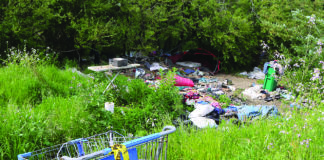By ERIK CHALHOUB, Managing Editor
When tragedy struck the Ohio State Fair on July 26, the amusement industry was attacked by the general public. As is the case nowadays, people took to social media to bash the industry, many saying they would never visit an amusement park again.
But what they fail to realize is that there is a risk in everything; some activities more than others. Additionally, many don’t know the difference between a carnival and an amusement park.
A carnival is a fly-by-night operation meant to be easily assembled and disassembled so it can be transported to various events hundreds of miles apart.
An amusement park is a permanent establishment with rides that are constructed over a period of months, meant to operate for years in one location and survive the daily wear-and-tear.
It’s like comparing a tent to a house. Sure, a tent will protect you from the elements during the night, but over the years, and after constant assembling and disassembling, eventually the fabric is going to tear.
Maintain a house properly, meanwhile, and it will outlive you and future generations. Unless a tornado or massive earthquake rumbles through, but that’s rare.
At the Ohio State Fair, an 18-year-old rider was killed and others seriously hurt after a section of the Fireball ride snapped off mid-cycle, flinging riders toward the ground.
Both citing “an abundance of caution,” officials at the Santa Cruz Beach Boardwalk and California’s Great America both temporarily closed their similar pendulum-style rides. The Boardwalk’s Fireball ride was manufactured by the same Dutch company as the Ohio ride, KMG, while Great America’s is from a different company.
All rides at the Boardwalk are inspected daily, weekly, monthly and yearly under safety protocols established by Division of Occupational Safety and Health (Cal/OSHA), said spokesman Kris Reyes. In addition, state officials also perform annual inspections, as well as unannounced inspections, and state law also requires the park to have a third party inspection of the rides.
The Boardwalk’s Fireball also has a “very clean safety record” after 14 years of operation, Reyes said.
Carnival rides also undergo extensive inspections, as outlined on Cal/OSHA’s website, but that takes me back to the tent analogy: undergoing stress, that fabric may tear in the middle of the night long after the tent has been erected.
The International Association of Amusement Parks and Attractions, a 90-year-old organization that comprises of professionals from amusement, theme, water and other permanent parks, cites in its 2015 Ride Incident Survey Report that the chance of being seriously injured on a fixed-site ride at a U.S. amusement park is one in 16 million.
The Outdoor Amusement Business Association, a 50-plus-year-old advocacy organization for the portable attraction industry, cites the chance of serious injury on a ride as one in nine million.
As a comparison, the National Weather Service estimates the chance of being struck by lightning in the U.S. is one in 775,000.
The National Highway Traffic Safety Administration states that the number of deaths on U.S. roadways in 2014 was 32,675.
But that doesn’t stop people from driving cars, does it?
As for me, I will continue to travel (by car) to visit various amusement parks and enjoy some rides.
•••
Erik Chalhoub can be reached at ec*******@********an.com or 761-7353.











